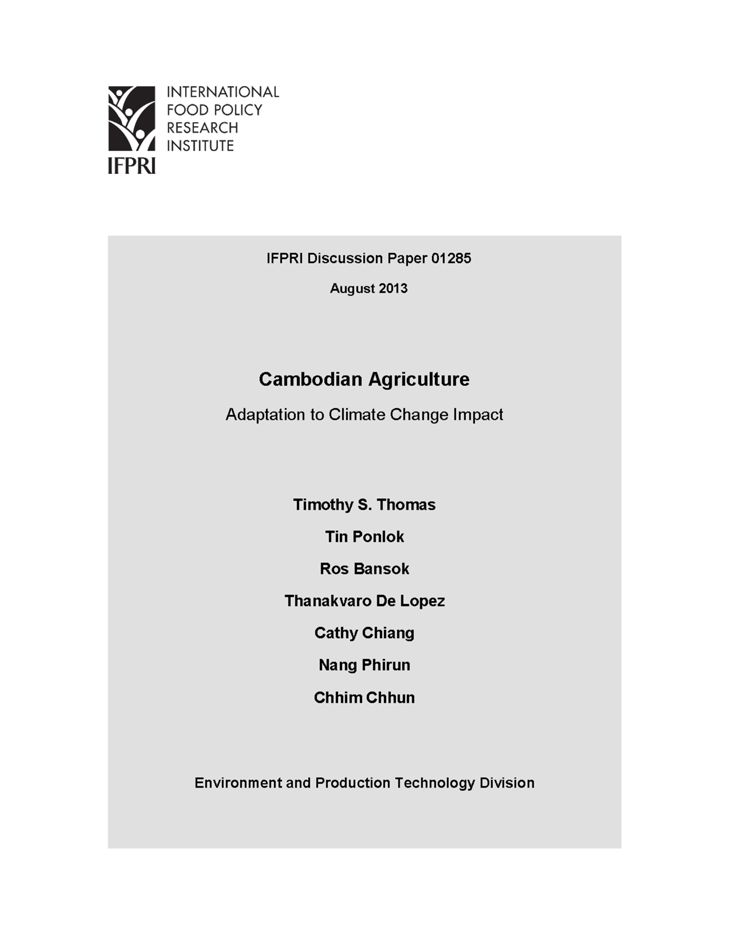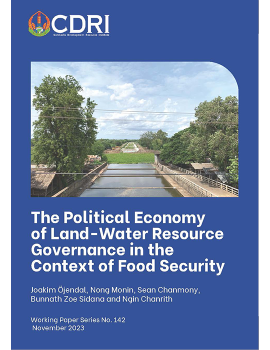
Abstract/Summary
Cambodia has been identified as one of the most vulnerable countries to climate change, given the predicted changes in temperature and precipitation, the share of labor in agriculture, and the country’s low adaptive capacity due to widespread poverty. In this study, we use climate data from four general circulation models (GCMs) to evaluate the impact of climate change on agriculture in Cambodia by 2050. We used the Decision Support System for Agrotechnology Transfer crop modeling software to evaluate crop yields, first for the 1950–2000 period (actual climate) and then for the climates given by the four GCMs for 2050. We evaluated crop yields for eight different crops at 2,162 points in Cambodia, using a grid of 10-kilometer squares, for 2000 and 2050. For each crop, we searched for the best cultivar (variety) in each square, rather than assuming the same cultivar to be used in all locations. We also searched for the best planting month in each square. We explored potential gains from changing fertilizer levels and from using irrigation to compensate for rainfall changes. This analysis indicates that when practiced together, using improved cultivars better suited for the changing climate conditions and adjusting planting dates can lessen the impact of climate change on yields, including for both wet- and dry-season rice. In addition, the analysis shows that losses in yield due to climate change can be compensated for—for many crops—by increasing the availability of nitrogen in the soil. To provide context to the modeling analysis, a survey of 45 communes was conducted using focus group discussions to solicit information on agricultural practices. Questions were asked about fertilizer, irrigation, seeds, tillage, and pest management, as well as about natural disasters and how farmers respond. Key results indicate that in response to extreme weather, only 7 to 16 percent of farmers report changing crop variety and only 20 percent of farmers report changing planting dates. Since the modeling results indicate that adaptation to climate change by changing crop variety and planting dates will be critical in order to avoid yield losses over the next 40 years, it is recommended that farmers expand their capacity to adapt in this way. In addition, every commune reported using some type of chemical fertilizer; however, in a typical commune, only 50 percent of the farmers were using any chemical fertilizer. This indicates that there is room to increase the use of chemical fertilizers. Finally, focus group participants were asked to name the top three natural disasters of concern. Drought was the most cited, reported in 44 of the 45 communes (98 percent), while flooding was cited in 67 percent of the communes surveyed. Despite this, in fully 58 percent of the communes, farmers reported taking no action in response to floods. In response to drought, farmers reported switching to other crops in 16 percent of the communes, and changed planting dates in 19 percent, while only 7 percent of the communes reported no adaptation in farming practices. These findings indicate the need for intervention to help farmers deal with floods in particular, and to determine whether strategies for adapting to drought are the best suited to mitigate crop loss.
Link to the article: https://www.ifpri.org/publication/cambodian-agriculture-adaptation-climate-change-impact



